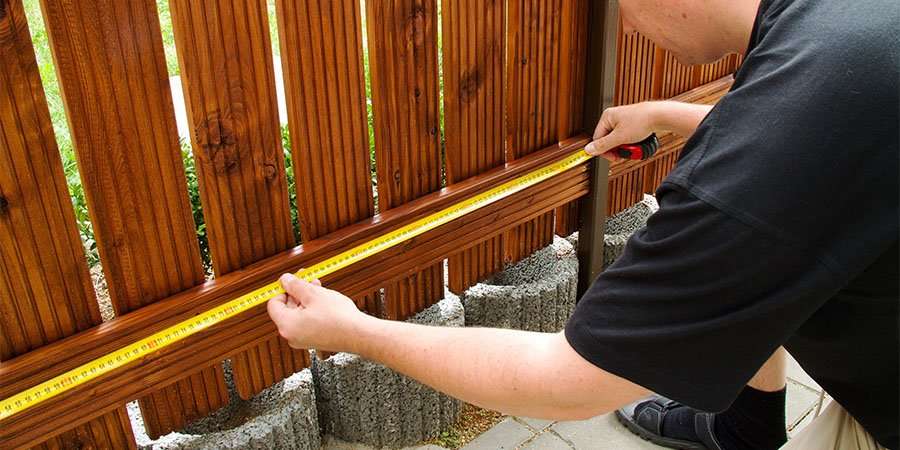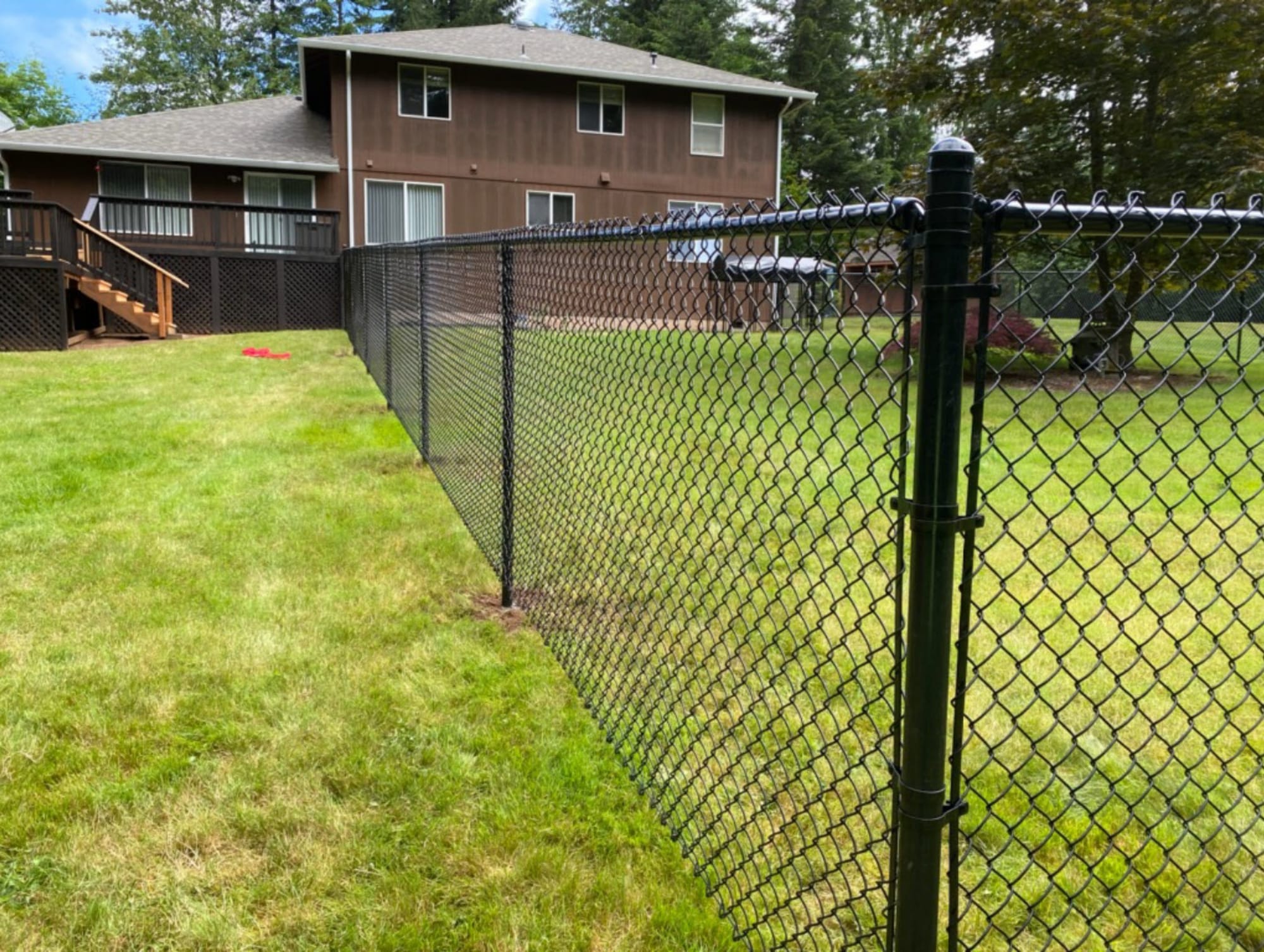All Categories
Featured
Setting up a fence on your property can include privacy, security, and aesthetic allure, but prior to you begin digging openings and establishing blog posts, it's necessary to recognize whether you need an authorization. The sort of fencing you intend to set up, where it will certainly be placed, and regional zoning regulations can all affect the permitting process. Not getting the essential authorizations can result in fines or the requirement to eliminate the fence. Here's what you require to understand to guarantee a smooth installment procedure.
Why Are Allows Needed for Fence Installation? Authorizations are necessary for making certain that your fence conforms with neighborhood zoning regulations and building codes. These policies help make sure the safety of your residential property and the bordering location. Furthermore, permits stop conflicts with next-door neighbors or neighborhood authorities, especially when it comes to home lines, elevation restrictions, and general design.
Oftentimes, neighborhood authorities require authorizations to control points like visibility at junctions or the closeness of a fence to public rooms like roadways or sidewalks. Authorizations likewise assist ensure that fencings are set up correctly and securely, especially when it pertains to high fences or one-of-a-kind materials.
Typical Kinds Of Permits for Fencing Setup. The kind of fencing you intend to mount and your place will certainly identify which permits are required. Right here are one of the most common kinds:
Structure Permit. A building license is usually required for fencings that go beyond specific height limitations (often over 6 feet), are located near a public road or pathway, or are made from details materials. Structure permits ensure that the structure meets regional building regulations, including safety criteria.
Zoning Permit. Zoning permits are commonly needed to ensure that your fencing conforms with local zoning laws. Zoning legislations can specify where a fence can be positioned on your residential or commercial property (e.g., along home lines or in front backyards), along with established limitations on fencing elevation. These legislations are designed to avoid blockages that can impact website traffic security or area aesthetics.
![]()
Setback Authorization. In some areas, you may need a problem permit to put your fencing a specific distance from property roadways, utilities, or lines. Troubles are planned to preserve correct space in between structures and residential property limits, minimizing potential conflicts with neighbors or public infrastructure.
Homeowners Organization (HOA) Authorization. If your property belongs to an area controlled by a Homeowners Association (HOA), you will likely need authorization from the HOA prior to installing a fencing. HOA guidelines usually govern the design, elevation, materials, and even shade of fences, making sure that they match the overall visual of the neighborhood.
The Process for Getting a Fencing Authorization. To get a fencing license, you usually require to call your local city or region workplace. The majority of areas have a building division or planning office where you can request permits. The procedure involves finishing an application and providing comprehensive information concerning your suggested fencing, including:
Fencing design (products, height, design) Location on the home. Home line information (for exact placement) In many situations, a website plan showing the recommended fence's setting will be required. You might additionally need to pay a license charge, which can differ based on area and the complexity of the job.
Once you send your application, the regional authorities will examine it to ensure the fencing conforms with neighborhood laws. Relying on your location, you may additionally need to schedule an inspection or enable for a residential or commercial property survey.
When Do You Not Need a Permit? In many cases, a license might not be needed. Normally, you could not need an authorization if:
![]()
The fencing is under a specific height (usually 3-4 feet for front yards) You're replacing an existing fence with the same type and height. The fence is short-lived (such as a yard fence) However, it's constantly a great idea to talk to your local structure or zoning department to verify the needs, as rules can vary.
Repercussions of Not Obtaining a License. Falling short to get the needed permits can result in various problems. The most typical repercussion is being fined or asked to remove the fence. In some instances, you might require to re-install the fence according to code, which could be costly and lengthy. In addition, not following the appropriate allowing process can create troubles with next-door neighbors, specifically if your fence prolongs past your residential or commercial property line or does not fulfill elevation or design demands.
Conclusion. Before mounting a fence, make certain you're aware of the regional policies and whether you require an authorization. It is essential to talk to your regional building or zoning office, as well as your HOA if appropriate, to recognize what's required. By getting the correct licenses, you'll make sure that your fencing is lawfully certified, secure, and without future issues. Taking this added step will certainly conserve you time and cash in the lengthy run while giving comfort that your job gets on the appropriate track.
Why Are Allows Needed for Fence Installation? Authorizations are necessary for making certain that your fence conforms with neighborhood zoning regulations and building codes. These policies help make sure the safety of your residential property and the bordering location. Furthermore, permits stop conflicts with next-door neighbors or neighborhood authorities, especially when it comes to home lines, elevation restrictions, and general design.
Oftentimes, neighborhood authorities require authorizations to control points like visibility at junctions or the closeness of a fence to public rooms like roadways or sidewalks. Authorizations likewise assist ensure that fencings are set up correctly and securely, especially when it pertains to high fences or one-of-a-kind materials.
Typical Kinds Of Permits for Fencing Setup. The kind of fencing you intend to mount and your place will certainly identify which permits are required. Right here are one of the most common kinds:
Structure Permit. A building license is usually required for fencings that go beyond specific height limitations (often over 6 feet), are located near a public road or pathway, or are made from details materials. Structure permits ensure that the structure meets regional building regulations, including safety criteria.
Zoning Permit. Zoning permits are commonly needed to ensure that your fencing conforms with local zoning laws. Zoning legislations can specify where a fence can be positioned on your residential or commercial property (e.g., along home lines or in front backyards), along with established limitations on fencing elevation. These legislations are designed to avoid blockages that can impact website traffic security or area aesthetics.

Setback Authorization. In some areas, you may need a problem permit to put your fencing a specific distance from property roadways, utilities, or lines. Troubles are planned to preserve correct space in between structures and residential property limits, minimizing potential conflicts with neighbors or public infrastructure.
Homeowners Organization (HOA) Authorization. If your property belongs to an area controlled by a Homeowners Association (HOA), you will likely need authorization from the HOA prior to installing a fencing. HOA guidelines usually govern the design, elevation, materials, and even shade of fences, making sure that they match the overall visual of the neighborhood.
The Process for Getting a Fencing Authorization. To get a fencing license, you usually require to call your local city or region workplace. The majority of areas have a building division or planning office where you can request permits. The procedure involves finishing an application and providing comprehensive information concerning your suggested fencing, including:
Fencing design (products, height, design) Location on the home. Home line information (for exact placement) In many situations, a website plan showing the recommended fence's setting will be required. You might additionally need to pay a license charge, which can differ based on area and the complexity of the job.
Once you send your application, the regional authorities will examine it to ensure the fencing conforms with neighborhood laws. Relying on your location, you may additionally need to schedule an inspection or enable for a residential or commercial property survey.
When Do You Not Need a Permit? In many cases, a license might not be needed. Normally, you could not need an authorization if:

The fencing is under a specific height (usually 3-4 feet for front yards) You're replacing an existing fence with the same type and height. The fence is short-lived (such as a yard fence) However, it's constantly a great idea to talk to your local structure or zoning department to verify the needs, as rules can vary.
Repercussions of Not Obtaining a License. Falling short to get the needed permits can result in various problems. The most typical repercussion is being fined or asked to remove the fence. In some instances, you might require to re-install the fence according to code, which could be costly and lengthy. In addition, not following the appropriate allowing process can create troubles with next-door neighbors, specifically if your fence prolongs past your residential or commercial property line or does not fulfill elevation or design demands.
Conclusion. Before mounting a fence, make certain you're aware of the regional policies and whether you require an authorization. It is essential to talk to your regional building or zoning office, as well as your HOA if appropriate, to recognize what's required. By getting the correct licenses, you'll make sure that your fencing is lawfully certified, secure, and without future issues. Taking this added step will certainly conserve you time and cash in the lengthy run while giving comfort that your job gets on the appropriate track.
Latest Posts
Why Regular Vehicle Maintenance at Montclare Auto Repair Keeps Your Wallet Happy
Published May 29, 25
1 min read
Discover the Greatest Auto Repair Deals in Montclare, Chicago
Published May 26, 25
1 min read
Experience Yesterday's Pub: Where Taste Fulfills Custom
Published May 22, 25
1 min read